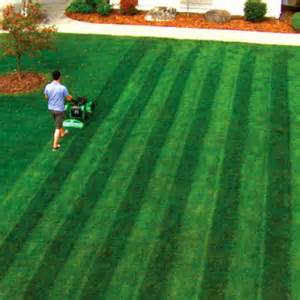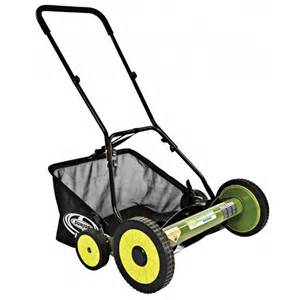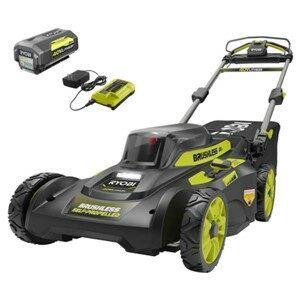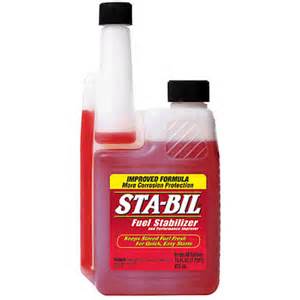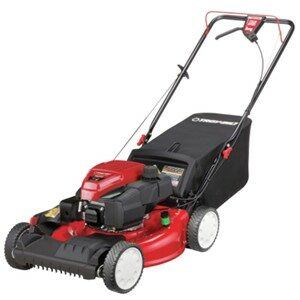The Homeowner’s Mowers Guide
1) Choosing A Lawn Mower.
2) When To Mow The Lawn.
3) Setting The Proper Cutting Height.
4) Vary The Mowing Pattern.
5) Which Is Best Mulching or Bagging?
6) Do Not Mow On A Schedule.
7) Sharpen The Mower Blade.
8) Clean or Change The Air Filter.
9) New Lawn or Sod.
10) Mowing Safety.
11) Watering The Lawn Guide.
12) Know Your Lawns Terrain.
13) Preparing Lawn Mower for Winter Storage.
Introduction
This is for first the time homeowner with a lawn to mow. Learn now it’s done. These Lawn mower tips provide help to care for a lawn like a pro. As you gain experience mowing the lawn, you will become a pro. With the tips below, you should follow them so that your lawn will look the best on your block.
With home ownership, you must decide on the type of mower to use. The options are: gas-powered, push reel and cordless electric models. With gas-powered and battery-powered models, you must decide on a riding, push behind, or self-propelled. But, before you even begin to select a mower model, you first should know the layout of your yard in square feet and the type of terrain it has. All of these will play a vital role in selecting the right mower for your lawn.
Choosing A Lawn Mower
As we mentioned above, you have some choices in selecting the right mower model for your yard. We will review the push reel mowers, cordless mowers, and gas-powered mowers.
Push Reel Mowers
What is nice about these mowers is they don’t require any maintenance accept for oiling the wheels and other parts of the mower. You don’t need any gas, oil, spark plug, air filter, gas filter and carburetor. These mowers are great for the environment and easy on the ears as they make very little noise.
These mowers are an excellent choice for small yards up to 2,700 square feet or less, with no trees. Keep in mind, that you supply all of the power for moving the mower forward. This mower is not the type for the elderly or those with handicaps. The cutting widths of these mowers will vary from 14 to 20 inches.
With this model, the blades will turn as the mower is pushed. Some models come with a collection bag to collect the grass clippings to be disposed of later. Otherwise, you might have to rake up those clippings after a mowing session. This is especially true if the grass is tall. For shorter grass, just leave the clippings on the lawn as fertilizer.
On the down side, these mowers are not good when trying to mow tall or wet grass. These mowers are not good for those who have any handicaps. Also, other objects on the lawn can get lodged in the blades and have to be manually removed. If there are sticks and other debris on the lawn, you must rake the lawn first before mowing it. This is an extra step. The blades must be sharpened regularly to be effective.
Battery-Powered or Cordless Electric Mowers
This type of mower runs entirely on rechargeable battery power. The benefit of this mower is for the environment. It does not emit any gas fumes into the air. It runs quieter than the gas-powered models. These models requires less maintenance than the gas models.
The cutting widths of these models will vary from 13-inches up to 21-inches.
The battery-powered mowers will provide an average runtime between 25 minutes to 1 hour on a fully charged battery. If cutting the lawn takes longer than the runtime of the battery, you should have a backup battery on hand to complete the mowing job on the same day.
With these mowers you will not need to replace some parts like, the air filter, gas filter, oil and spark plugs. These mowers are lighter and easier to move around.
These mowers are not good for cutting tall and wet grass as damage to the motor could result. This model mower is good for lawns that are up to ¼ of an acre or 10,890 square feet or less.
Gas-Powered Mowers
The gas-powered mowers have the most power to cut heavy and wet grass. These mowers are for large yards or properties greater than ½ of an acre. The types of mowers you can select from are push behind, self-propelled and riding models. These models can be very expensive depending on the size yard you have to mow.
The cutting widths of these models will vary from 30-inches to over 60-inches. The larger the cutting width the more grass is cut on one pass.
These models do require the most maintenance than the others mentioned above. They are not for the environment as they emit gas fumes into the air and are very noisy. You need to keep gas on hand and must place the gas can in a safe area for storage.
It is recommended that you purchase a fuel stabilizer to keep the gas fresh. Gas gets stale after 30 days and a fuel stabilizer will keep it fresh for up to 1 year.
Bear in mind that the terrain also plays a role in which type of mower model to buy. Riding mowers are good for slopes while zero-turn models are excellent for yards with lots of obstacles to avoid.
When To Mow the Lawn
You should get into the habit of mowing the lawn when it is dry and avoid cutting it when it’s wet. The wet grass is covered with dew and is heavy and can cause uneven terrain for mowing. Wet grass can also clog your mower and cause it to dump clumps of grass on the lawn.
When mowing the lawn, always cut no more than 1/3 of the grass blade off the top. In the summer months, keep the grass 3 inches high.
Another tip is to mow in the late afternoon when the sun is going down after the heat of the day has passed. Cutting in the heat of the day can put stress on the lawn.
Avoid cutting the lawn too late in the day when darkness falls. The reduced visibility increases the chances of a mower mishap.
Setting The Proper Cutting Height
When mowing the lawn, set the cutting height of the mower to its highest setting. Or, between 3.25 and 4 inches. Remember, you want to cut only 1/3 of the grass blade at any one time. During the spring you might be mowing more, but your lawn will like it.
During the spring there will be more rainfall which helps the grass to grow. Conversely, the absence of rain will impact the lawns growth. Generally, in the summer you might be cutting the lawn less because of the lack of rainfall. Only mow when the lawn needs it.
After mowing the grass, it should not be less than 3 inches high as this is the optimal grass height for the lawn. When mowing, be sure that the grass height is above 3 inches and only cutoff the top 1/3 of the grass blade.
By using the highest setting it helps to control weeds and grubs from invading the lawn.
Video: How To Properly Mow The Lawn
This is an excellent on how to properly mow the lawn. Take a look!
Vary The Mowing Pattern
For the best results, when you mow change the mowing pattern. Which means to change the direction each time you mow. If you went in one direction, go across the next time. Mowing in the same pattern, you will notice the grass starting to lean in the direction mowed. You might even end up with ruts in the lawn.
A benefit of changing the cutting pattern is the grass will stand up nice and tall since it is being mowed in different directions. Grass blades tend to grow in the direction they are mowed. By changing the pattern will help the grass blades to grow straighter and healthier.
Which Is Best Mulching or Bagging
When you mow the grass clippings have to go somewhere. Bagging involves collecting the grass and disposing of it on the compost bin or disposing it according you your local ordinances.
The other option you have is to mulch the clippings. When mulching the grass clippings will remain on the lawn after mowing.
We now come to the age old question which is best, mulching or bagging?
If you decide on mulching be sure to choose a mower that offers a mulching feature. Mulching does one important thing to the lawn by providing beneficial nitrogen, phosphorus, and potassium nutrients as fertilizer back into the soil.
After mowing, the clippings left on the lawn begin to decompose. As they breakdown, they add nutrients into the soil. By mulching you save the expense of buying fertilizer.
By mulching you save lots of time especially if you have a large area to mow.
With bagging, you have to stop and empty the bag multiple times, load the clippings and haul them to a compost pile or on the curb.
Our recommendation is to mulch rather than bag.
However, you might live in an area of the country that will not allow you to mulch for the entire mowing season. In those cases, you will be mulching and bagging.
Do Not Mow On A Schedule
Humans are a creature of habits and like to do things on a ridged schedule. When it comes to mowing the lawn, we tend to want to mow on weekends and mow using the same pattern. As we already mentioned above, you should vary the mowing pattern.
The grass type of your lawn will dictate when you should mow the grass. Here are some of the things to consider; growth conditions, growth pattern, and season. As you know, grass is actively growing in the spring. This means you will be mowing the lawn more frequently. But, in the summer, the grass growth slows which means it may need mowing every week or two.
Just be observant to the grass growth height. When it reaches 4 inches, it is time to mow and only remove 1/3 of the grass blade.
In the fall, you want the grass height to be 2.5 inches minimum, so it can make it ready for winter to resist disease and will not be overly stressed by the cold temperatures.
The last mow of the season should be one week before the first frost. If you live in a region that does not get frost, keep the grass 3-3.5 inches high during the winter season.
For optimal results, keep the grass height between 3 and 3.5 inches all year round.
Sharpen The Mower Blade
One of the most important maintenance jobs you can do for the mower is to sharpen the blade regularly. It is recommended to sharpen the blade after 25 hours of operation. For most homeowners, you should sharpen the blade at the end of the mowing season.
Video: How To Sharpen The Mower Blade
This is an excellent video showing you three ways to sharpen the mower blade.
Dull blades just tear up the grass which causes ragged brown edges. If you should keep on mowing with a dull blade it can cause the grass to weaken over time. This makes the grass more susceptible to disease, insect damage, and other stresses like heat and drought.
So, after the mowing season get into the habit of sharpening the blade. Also, don’t forget to clean under the deck after every mowing session to prevent the blade from turning and preventing other type of blockages.
You will know the mower blade needs to be sharpened when you see your lawn appear yellow, brown, and raggedy. A dull blade may even pull up portions of the grass instead of slicing through the blades of grass cleanly.
Note: After sharpening the blade be sure that it is in balance. Otherwise it will cause damage to the mower. Use a balancing blade tool or any nail on wood to ensure the blade is balanced. Take off metal from the end that is goes below the balancing tool or the nail used on the wall or wood that goes down.
Clean or Change the Air Filter
Another important maintenance job you can do is to check on the air filter regularly. A clean air filter is a good defense against dirt and debris that is kicked up during mowing. It also prevents dirt from entering the engine through the carburetor.
However, a dirty air filter can make dirt and debris to make their way to the engine which leads to potential start-up problems and a shorter engine life.
Clean the air filter after every 25 hours of operation or every three months, whichever occurs first. Especially if you live in dusty conditions. This keeps the mower running in top condition.
To change the air filter you need to consult the owner’s manual for the proper air filter part to purchase for the mower. Then follow the instructions to change the air filter.
New Lawn or Sod
You just had some new sod laid down or planted seed for a new lawn. You must wait to allow the grass to get off to a good start. You can cut new grass seedlings when they reach a certain mowing height. This will vary by grass type. Remember, to only cut the top 1/3 of the grass blade.
Below is a table on when to cut grass for the first time based on the type of grass have.
Type of Grass Grass Height
Bahia 2 – 21/2 inches
Bermuda 1 1/2 to 2 inches
Bluegrass 2 – 2 1/2 inches
Centipede 1 1/2 – 2 inches
Fescue 2 – 3 inches
Perennial Ryegrass 2 – 3 inches
Zoysia 1 – 2 inches
When mowing sod, wait for 2 to 3 weeks before mowing. To determine if it is ready, walk on the turf and if its firm enough to walk on, it is good to mow. Do not cut the grass lower than 2 inches for the first few mowing sessions. Be careful not to pull up any sod. If you do, just put it back in place.
Mowing Safety
Lawn mowers are helpful tools when they are used properly. Below we will share some mowing safety rules you should observe to avoid accidents.
- Wear the proper footwear. Do not use sandals when mowing the lawn. Sandals are not good because they are less stable, and nay trip, slip or stumble could cause you to come in contact with the mowers moving or hot parts. Sandals also will increase the odds of you pinching or stubbing a toe when mounting a riding or zero-turn mower.
- Wear goggles. When mowing it is good to wear protective eyewear. You never know what the mower may toss as it is mowing the lawn. This is especially true for riding mowers.
- Wear hearing protection. Because of the noise of the gas-powered mowers, it is recommended to wear ear protection. Mowers produce 85 or higher decibels which can damage the ear if hearing it for extended periods of time. Some mowers can produce more than 100 decibels.
- Remove the spark plug before changing blades. This is a good idea so that the mower won’t start by accident and cause some serious injury. Take precaution and remove the spark plug.
- Avoid throwing stones. Mowers are great for picking up small rocks and stones and toss them like a missile. Get into the habit of walking over the lawn and picking up any loose rocks, stones or any obstacles that can be tossed or damage the mower.
- Never mow over gravel. Do not cross over a gravel driveway with the mower blades engaged. You could launch rocks everywhere and neighbors will not like it. Also pedestrians could be walking by and get injured. Be careful when mowing near gravel. Be sure no one is around including kids when mowing near gravel areas.
- Never pull the mower backwards. As much as it is in your power, try not to pull the mower backwards toward you. If you should slip, you could end up pulling the mower over you and cause serious injury. This is a real hazard so be careful if you must pull the mower backwards.
- Watch out for kids. If you have kids or there are children in your area, be sure they are not around when you begin to mow. Keep the toddlers inside. Never let kids under the age of 12 operate a push mower and under 16 for a riding mower. Avoid giving kids a ride on your riding mower as they are designed for one person.
- Mind the hills. If you own a riding mower be careful of slopes and hills. It is easy for the mower to tip over sideways, so mow up and down the hill. With push mowers mow side to side. Never mow on hills or steep slopes when the grass is wet. You have a great chance of slipping and getting injured regardless of which type of mower you are using.
- Stay clear of moving blades. If the blades are spinning and the chute is clogged, do not attempt to remove the debris. Turn off the mower first. Then inspect the blades and remove any obstructions. If you own a riding mower, never disable the kill switch or tie down the safety lever. This is for your own safety and prevents any injuries from happening.
- Read the owner’s manual. Get to know your mower by reading the owner’s manual. Get to know how your model mower works. It also has some helpful maintenance tips to keep the mower running in top condition. Take time to read it. If you cannot find it, go to the internet to locate it. You will need to know the model number of your machine and search for the manual.
- Beware of burns. The mowers do get hot as they operate. If you have any unprotected skin that comes in contact with the hot surfaces, you could experience a severe burn. Take special care when adding fuel that there are no hot surfaces or other ignition sources such as cigarettes that could ignite fuel or vapors.
Watering the Lawn Guide
When to water the lawn will be helpful so you can get the best outcome when the sprinklers come on. The best time to water the lawn is between 4 AM and 10 AM. If that is not a good time, then 4 PM to 6 PM is second best. The reason is there is less sunlight to evaporate and wind to blow the water away.
Know When The Grass Needs Water
This may be a little tricky, so check out the information below.
- The Step Test: Step on the lawn. If the grass does not spring back right away, you need to water the lawn. If it pops back up, it does not need any water.
- Check for Curled Blades: Take a close look at the grass. If you notice the blades being curled, it’s time to water the lawn.
- Check for a Change in Color: If you notice the grass starting to lose its green color, it’s time to water.
How Often Should I Water?
In most cases, lawns need between 1 to 1.5 inches of water per week – either from rain or watering yourself. Be to soak the soil deeply between 6 to 8 inches deep. The amount of water can be applied during a single watering or divided into two watering’s per week. Be careful not to overwater the lawn because it could be susceptible to disease.
New Lawns
If you should have a new lawn, it needs to be watered every day. In some instances you may need to water more than once a day to keep the soil moist. During this early period, do not allow the top ½ inch of the soil to become dry until the grass grows to 1 inch tall. Once it’s 1 inch tall, you can water the grass every other day until established. Once established you can water 1-2 times per week.
Drought Conditions
If your area should encounter serious drought conditions cut the grass on the high side so after cutting the grass the blade is 3-4 inches high to help shade the roots. The benefit of taller grass is a deeper root system to draw moisture from a larger volume of soil and does not require as much watering.
Sprinkler Systems
Some homeowners have a sprinkling system to water the lawn. If you should have one, take notice of where the water is going as some sprinklers apply the water too fast. If you should see water running into the street, shutoff the water and allow it to absorb into the soil for 20 minutes. After 20 minutes, turn the water back on.
Know Your Lawns Terrain
This is important as it plays a vital role in selecting the proper mower for the terrain of your lawn. The hills and slopes may look nice to you but, they are not good for certain types of mowers.
- Hilly Terrain. If you have a hilly terrain riding mowers are dangerous because of the possibility of tipping over. If you own a push walk-behind mower always mow across the incline. If you have a riding mower, mow up and down on the incline and never across.
- If your lawn should have lots of trees and other obstacles to avoid when mowing, be sure to select the model that is best. Zero-turn mowers are great for avoiding obstacles in the lawn but not on hills or slopes. While walk-behind mowers do well on hills and slopes but not in avoiding obstacles on the lawn. Last, the size of the lawn will play a role here. With larger lawns greater than ¾ of an acre, your only choice is a riding mower.
- Types of Mowers. ¼ acre of less with flat or even terrain a push reel mower, electric, battery or gas-powered are excellent choices. ¼ acre to ½ acre, some hills a self-propelled or battery powered mower will do fine. ½ acre to ¾ acre, with rough and hilly terrain, riding mowers are the choice. 1 acre or more a zero-turn mower is the choice for rugged terrain, obstacles, and thick grass.
Preparing Lawn Mower For Winter Storage
Congratulations you reached the end of the mowing season for the first time. Now, you have to prepare the lawn mower for winter storage. There are a few things you should do before storing the mower away until spring. Let’s look at some of them.
- Gasoline. You have 2 options: Storing the mower away with an empty tank or full gas tank. 1). If you choose an empty tank, run the mower until the engine stops. 2). On a full tank of gas, add a fuel stabilizer into the gas before filling it, then add it into the mowers tank. Let the engine run a few minutes to circulate it through the engine. We recommend that you add a fuel stabilizer into the gas can every time you fill it up at the gas station. This will keep the gas fresh all through the mowing season.
- Change the oil. Change the oil by following the instructions in the owner’s manual. Look for the type of oil to use and how much to add.
- Clean under the deck. Before storing the mower away, be sure to clean under the mower’s deck. Before doing this, remove the spark plug. Follow the manufactures directions for tipping the mower. Use a putty knife to scrape off the clippings, dirt and debris.
- Spark plug. Spark plugs should be changed after every 100 hours of use or every other year. Replace the spark plug according to the instructions in the owner’s manual.
- Air filter. Clean the air filter. If its a paper filter, it should be changed. A clean air filter allows your engine to burn gas more efficiently. If you should find it difficult to clean the filter, change it.
- Sharpen the blade. If you have not already done this during the mowing season, sharpen the blade before storing it away. It will be ready to go in the spring.
- Recharge the battery. If you own a battery-powered mower, recharge the battery before storing it away for the winter. Check on the battery through the winter months to ensure the battery if fully charged. If not, charge it. Your goal is to have a fully charged battery in the spring.
- Storing the mower. Disconnect the battery if you own a battery-powered mower and the spark plug for gas models. Then, store the mower in a dry protected area. If you are storing it on concrete, place some plastic under the mower to prevent any moisture from rusting the deck. Never store the mower next to a furnace, water heater, or appliance with a pilot light. It is also a good idea to tighten any loose nuts and bolts.
Conclusion
In this article, we have shared lots of information on providing some great lawn mower tips for beginners. It was a lot of info to take in and digest. But, if you are a new homeowner, you should learn what you need to do when you purchase a lawnmower and what type of maintenance is required to keep it running in top condition.
We shared information with a yard that has new sod or planted seeds.
How often you should mow the lawn and how high the glass blade should be. Remember, to mow only the top 1/3 of the grass blade every time you mow. Mow only when the grass needs it and not on your schedule.
By following these tips and you will be surprised on how quickly you will learn to be a pro every time you mow the lawn.
Shop Mower Supplies
You can shop for some mower supplies by clicking on the image of interest. You will be taken to Amazon where you can place the order. While there, you can read the customer reviews and answered questions before purchasing.
As an Amazon Associate I earn from qualifying purchases.
